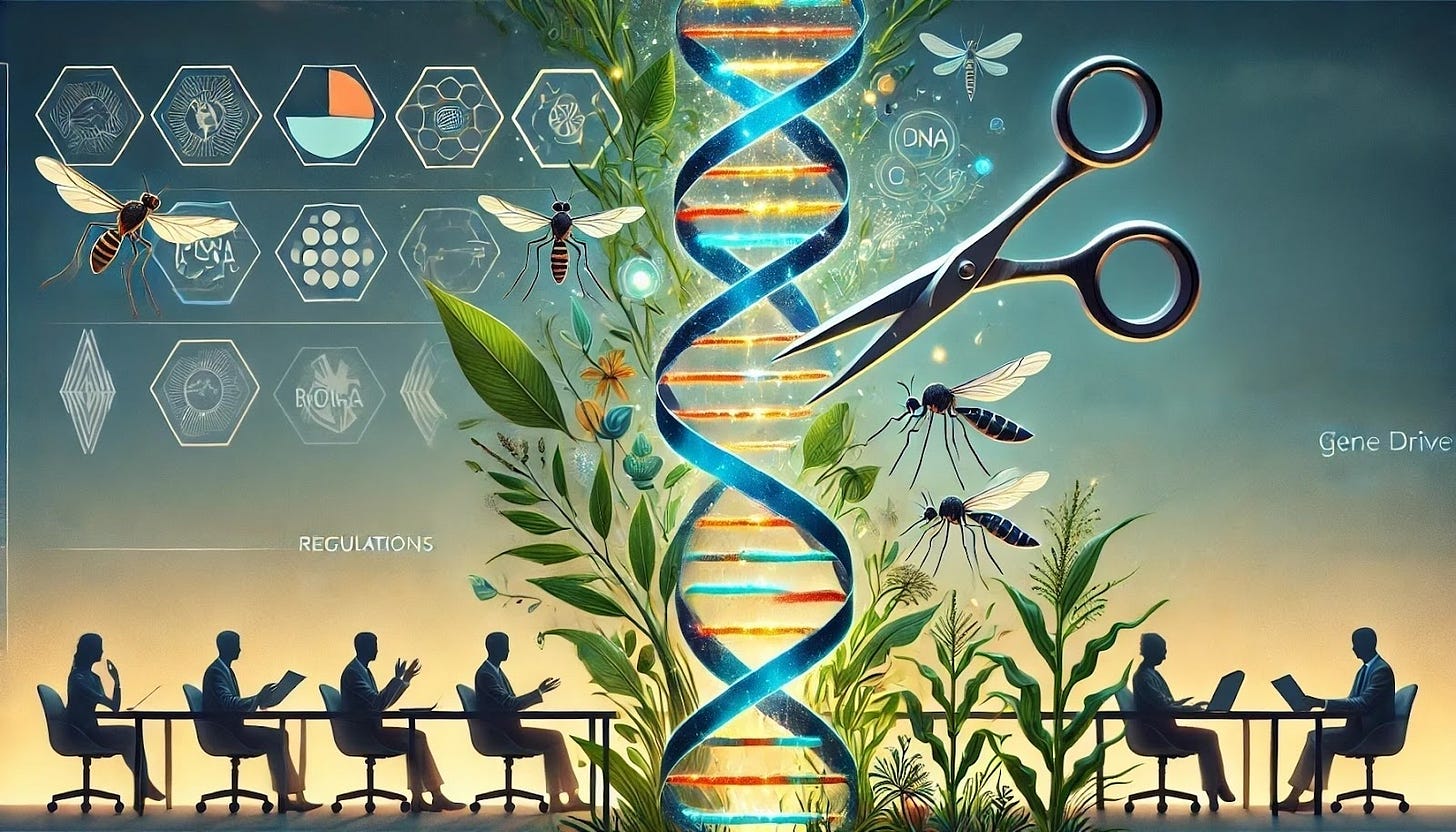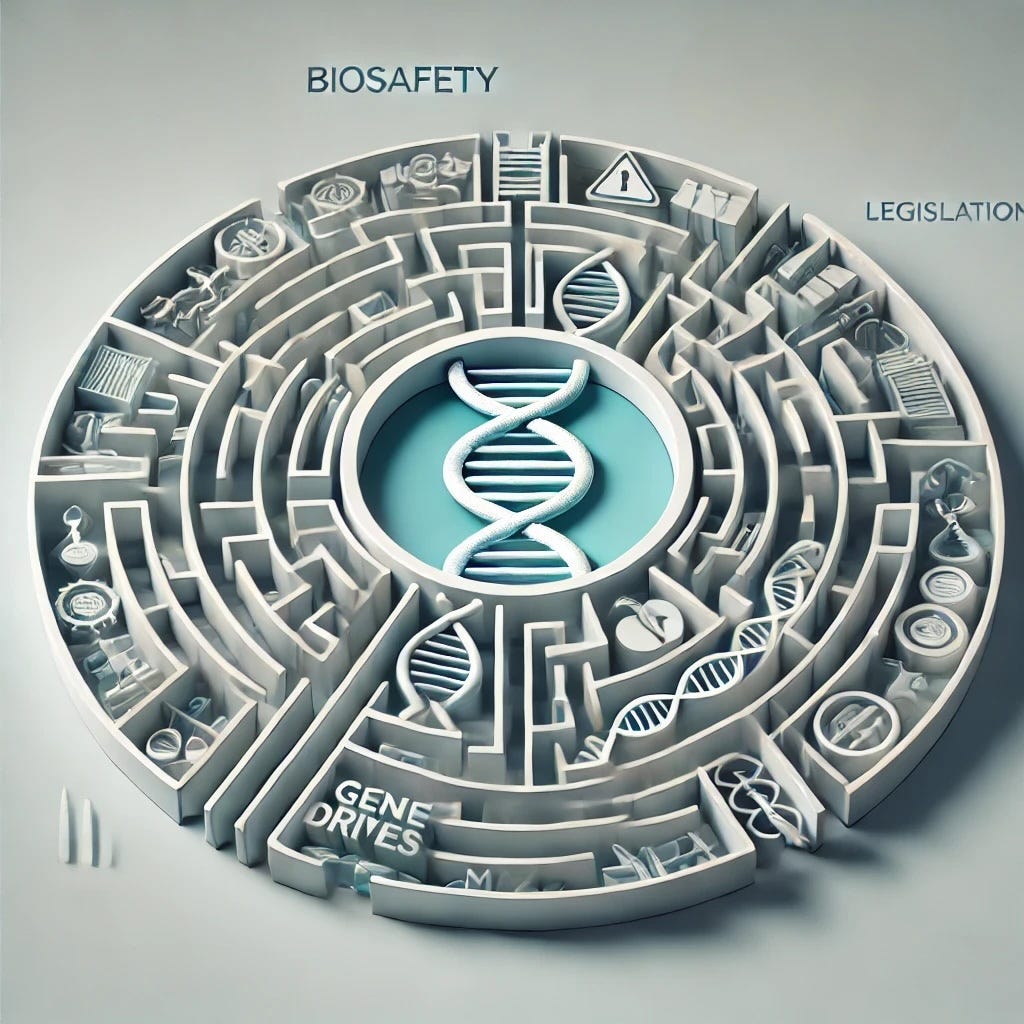Gene drives—a concept that might sound like something from science fiction—could reshape the way we address some of the world's most pressing challenges. Picture a future where we can eradicate devastating diseases, better protect our crops, and control invasive species. This technology holds the power to turn these visions into reality.
However, with such transformative potential come significant risks and ethical questions. Let’s unpack what makes gene drives such a groundbreaking and controversial innovation.
What Are Gene Drives?
In simplest terms, gene drives are a way to manipulate inheritance. The idea of gene drives isn’t new. As far back as the 1940s, scientists were uncovering genetic elements that didn’t adhere to Mendel’s rules of inheritance, such as meiotic drive and transposable elements. These natural mechanisms gave certain genes an evolutionary advantage.
With gene drives—powered by CRISPR—scientists can override the natural balance of how genes are passed down ensuring nearly all offspring inherit a specific trait. In 2015, gene drives took an exciting leap forward. Scientists demonstrated the first synthetic gene drive using CRISPR in mosquitoes, turning theory into reality. Suddenly, gene drives became a potential tool for solving some of the world’s most pressing problems.
The possibilities are impressive, to say the least. Think malaria-carrying mosquitoes that can no longer spread the disease, crops shielded from pests without relying on harmful chemicals, or even the potential to eliminate invasive species threatening ecosystems. It’s the kind of innovation that makes you sit up and pay attention.
But here's the catch: what if these genetic modificatіons spread beyond their intended target? What if wе inadvertently disrupt entire ecosystems? These quеstions aren't just hypothetical—they're the reason whу gene drives are such a topic of hot debate.
Real-World Applications
Gene drives are unlocking transformative possibilities across various fields. DARPA’s Insect Allies program, for example, aimed to protect crops by using genetically modified insects to deliver resilience-enhancing viruses, though critics warn of potential ecological risks or misuse. In plants, researchers have developed gene drives to combat herbicide-resistant weeds like pigweed, potentially reducing pesticide use, though regulatory and ecological challenges remain. Viral gene drives are also gaining traction, with CRISPR-based approaches showing promise in eliminating dormant herpes infections in mice, offering hope for future human therapies despite safety and resistance concerns. Meanwhile, the e-Drive addresses fears of uncontrollable spread by phasing out within 8–10 generations, providing a safer way to combat pesticide resistance. Mosquito gene drives remain a critical tool in the fight against malaria and Zika, with the ability to suppress populations or block disease transmission, though questions about ecological impact and ethical governance persist. These innovations highlight the vast potential of gene drives, balanced by the complexities of regulation and responsible deployment.
The Debate Over Gene Drives
For many scientists, gene drives are a beacon of hope. Gene drives, they argue, are precision tools—more targeted and effective than traditional methods of solving pressing problems in human health and agriculture.
Skeptics, however, see a Pandora’s box. What if gene drives spread uncontrollably or mutate in unexpected ways? What if their release has cascading effects we can’t predict? Should humanity even have the power to engineer ecosystems?
The debate isn’t confined to research labs. In 2016, several NGOs and activists called for a global moratorium on gene drive research, citing ecological and ethical concerns. Meanwhile, organizations like Target Malaria argue that gene drives could save millions of lives by controlling malaria-transmitting mosquitoes in Africa.
In 2018, an open letter signed by over 100 scientists urged governments to reject a proposed moratorium on gene drives at the United Nations Convention on Biological Diversity. They argued that halting research would stifle innovation and hinder solutions to urgent problems like malaria and invasive species. Yet, critics caution against moving too quickly without fully understanding the potential risks.
Navigating the Regulatory Maze
So how do we tackle the debate on the use of gene drive? We can create clear and thoughtful legislation and guidelines. However, right now the regulatory landscape for gene drives is complex and fragmented—layered with overlapping jurisdictions, conflicting priorities, and gaping voids. In the United States, for example, the FDA, EPA, and USDA each have partial claims to oversight, depending on how a gene drive is classified: a veterinary drug, a pesticide, or an agricultural tool. This lack of clarity can make navigating the system a bureaucratic labyrinth for researchers and developers.
Globally, the situation is equally complex. While some countries, like Australia, are proactively engaging with the potential benefits of gene drives, others are pushing for stricter controls—or outright bans. The European Union, for instance, has yet to finalize a regulatory framework for this emerging technology, leaving researchers uncertain about the path forward.
As the possibility of real-world gene drive applications grows, so does the need for robust and unified governance. International frameworks like the Convention on Biological Diversity (CBD) and the Cartagena Protocol offer a starting point. Both mechanisms focus on managing biosafety risks associated with genetically modified organisms (GMOs), but their application to gene drives—a more self-propagating and ecosystem-altering technology—poses unique challenges.
For health-related applications, the World Health Organization (WHO) plays a pivotal role. Its Vector Control Advisory Group (VCAG) has set standards for evaluating new tools like gene drives for disease mitigation. However, the WHO and CBD approach governance from distinct angles: public health versus biodiversity conservation. These differing perspectives can lead to tension, especially when balancing the need for large-scale field trials with the precautionary measures emphasized by the CBD.
The African Union (AU) offers an example of regional leadership in this space. Through its High-Level Expert Panel, the AU has identified gene drives as a priority for combating malaria and has worked to develop frameworks for transboundary management and stakeholder engagement. This proactive stance ensures that African nations are not passive testing grounds but co-creators in the development of these technologies.
Ethical and Practical Challenges in Implementation
Imagine throwing a pebble into a pond—the ripples spread far beyond the point of impact. Gene drives work the same way, influencing entire ecosystems rather than isolated individuals. This ripple effect makes traditional ideas of consent—like those used in clinical trials—woefully inadequate. You’re not just asking a person or a community for permission; you’re making decisions that could cross borders, impact species, and alter ecosystems.
That’s why frameworks like Free, Prior, and Informed Consent (FPIC), originally designed to protect Indigenous communities, are being adapted for gene drive research. These frameworks aim to give communities a voice, but applying them to something as vast as ecosystem-wide genetic modifications is no small feat. How do you define “community consent” when the effects of a gene drive might extend well beyond any one group? Who takes responsibility for ensuring that decision-making is inclusive and transparent?
The challenges don’t stop there. For communities hosting gene drive trials, the promise of benefits—such as disease eradication or agricultural improvements—might take decades to materialize. It’s a long wait with no guarantees, and without clear guidelines on what constitutes fair and proportional benefits, the risk of creating coercive incentives looms large.
This isn’t just about checking boxes; it’s about earning trust. To move forward ethically, researchers and policymakers must craft standards that address these questions head-on. Gene drives have the potential to transform the world, but without careful attention to these ripple effects, we risk losing the public trust needed to realize their full promise.
The Path Forward
Gene drives are at the edge of transforming the way we tackle some of the world’s biggest challenges—but getting there means rethinking how we govern this groundbreaking technology. Imagine the WHO and the Convention on Biological Diversity (CBD) teaming up to create a global framework. Together, they could balance public health goals with biodiversity conservation, cutting through the red tape and giving researchers a clear green light to innovate responsibly.
But it’s not just about top-down policies—local leadership matters, too. Think about regions like Africa, where many field trials are likely to happen. By investing in capacity building and empowering national and regional authorities, we can ensure communities are at the center of the conversation. This isn’t about imposing solutions; it’s about collaboration, where everyone—from researchers to local leaders—has a seat at the table.
And let’s not forget the potential here. We’re talking about eradicating diseases like malaria, safeguarding crops, and protecting against invasive species. It’s a vision that could redefine what’s possible for human health and the planet. But this isn’t a "set-it-and-forget-it" kind of innovation. The risks are real, and without the right systems in place, things could go sideways fast.
So, where do we go from here? Collaboration is key. Scientists, policymakers, and communities need to join forces to set up the safeguards that ensure gene drives are used wisely. The future of this technology is exciting—and a little daunting—but with the right balance of boldness and care, we can harness its incredible potential while protecting the ecosystems and societies we all depend on.
Give us your thoughts and feedback!
Cheers,
-Hannah
The podcast audio was AI-generated using Google’s NotebookLM















